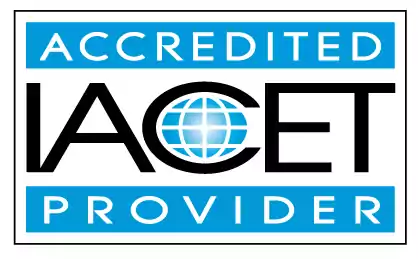Identify communication strategies for engaging nonverbal and minimally verbal children with autism.
Central objective: Identify communication strategies for engaging nonverbal and minimally verbal children with autism in early childhood education and child care centers. Supporting elements: outline appropriate practices to assess and demonstrate effective techniques for each child and emphasize the importance of individualized planning. Practical, evidence-informed guidance for teachers and caregivers to improve engagement and communication outcomes.Trainings incorporating this outcome
CDA Subject Areas
Proficiency Level
Target Audience
Topic Areas
Price
States
Alabama (1) Alaska (1) Alberta (1) Arizona (1) Australia (1) British Columbia (1) California (1) Colorado (1) Connecticut (1) Delaware (1) District of Columbia (1) Florida (1) Georgia (1) Hawaii (1) Idaho (1) Indiana (1) Iowa (1) Jamaica (1) Kansas (1) Louisiana (1) Maine (1) Manitoba (1) Maryland (1) Massachusetts (1) Mississippi (1) Montana (1) Nebraska (1) New Mexico (1) Newfoundland and Labrador (1) Ohio (1) Oklahoma (1) Ontario (1) Oregon (1) Puerto Rico (1) Rhode Island (1) Saskatchewan (1) South Dakota (1) Texas (1) Thailand (1) United Kingdom (1) Utah (1) Vermont (1) Virgin Islands (1) Virginia (1) Washington (1) West Virginia (1)
6 hours courses
Related Outcomes
- Identify appropriate practices for identify and demonstrate an children: Identify examples of appropriate activities for different ages
- Identify strategies to promote joint attention, turn-taking, and social reciprocity for children with autism during play.
- Identify appropriate practices for identify and demonstrate an children: Identify importance of individual planning
- List and review recommended feeding schedules and identify strategies for introducing new food for children birth through age three
- Identify strategies for effective communication with families
- List and review recommended feeding schedules and identifies strategies for introducing new food for children birth through age three
- Define and identify common signs and behaviors of children and youth with Autism Spectrum Disorder.
- Identify and use strategies for effective communication with community and colleagues.
- Identify strategies to communicate with families & increase parent involvement
- Identify strategies that promote health and wellness for school-aged children.
- Identify appropriate practices for identify and demonstrate an children: Teacher directed vs child directed
- List recommended feeding schedules and identify strategies for introducing new food for children birth through age three.
- Identify appropriate practices for identify and demonstrate an children: Define Developmentally Appropriate Practice
- Identify strategies to assist children with food allergies/feeding concerns.
- Define self-esteem and identify issues and strategies for support of school age children.
- Identify common interaction strategies to help promote a positive classroom environment for young children.
- Identify appropriate practices for identify and demonstrate an children: components of a lesson plan
- Identify strategies for effective communication with families.
Related Articles
- Understanding Why Toddlers Bite
- Resources for Managing Behaviors
- April is Autism Awareness Month
- The Power of International Sign Language in Early Childhood Education
- Shining a Light on Autism Awareness Month
- Big feelings: Teaching Kids to Manage Difficult Emotions
- Fostering Positive Social Skills in Children: Tips for Childcare Providers
- The Importance of Outdoor Play in Early Childhood Education
- Dance It Out: How Movement Therapy Helps Kids Heal Their Minds through Their Bodies
- 7 Skills Every Childcare Provider Should Master
- Parents Trust These 6 Skills in a Childcare Provider
- Child Abuse and Neglect Training: Empowering Educators to Recognize and Respond
- Drop-Off Drama? Not with Great Communication
- Planning with Purpose: The Art of Creating Inclusive ECE Classrooms 🎨
- 🧩 Early Signs of Autism in Toddlers — What to Watch For 👀
- 🧩 What Does ABA Look Like in the Classroom? 🎓 What Teachers Should Know
- 🧩 How Do I Support a Student with Autism While Managing Classroom Behavior and Learning? 💕
- 🧩 How Can You Make Your Classroom More Inclusive for Children with Autism?
- 🪁How Can Play Become a Powerful Tool for Supporting Children with Autism?🧩
- 💛🧩 How Can I Make My Teaching More Inclusive for Children with Autism?
 0.6 CEUs
0.6 CEUs